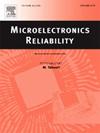Current fatigue models for predicting the cycles to failure (fatigue life) of solder joints under thermo-mechanical loadings can only provide point estimates of the characteristic life or median life. Nevertheless, the prediction of fatigue life should be distributed with the uncertainties. Unfortunately, previous work has not discussed the uncertainty of the cycles to failure, especially for the solder joints under temperature cycling. Therefore, the uncertainty propagation of the cycles to failure is necessary to better estimate the distribution of the fatigue life of solder joint. This paper presents a four-part uncertainty propagation approach for this problem. Part I models the solder joint using finite element analysis. Part II uses the eigenvector dimension reduction method and finite element analysis simulation tool to determine the distribution of the system response, which is the strain energy density accumulation. Part III uses a fatigue model to convert the distribution of strain energy density accumulation into a distribution of characteristic life (in cycles) by choosing the appropriate fatigue model. Part IV determines the cumulative distribution functions of the fatigue life of solder joint. We applied this method to a specific example of a solder joint for a ball grid array component to illustrate the procedure. This paper contributes to the field of durability prediction by proposing a novel uncertainty propagation method to estimate the uncertainty in the fatigue life of solder joints. Using this method can help engineers make solder material selection decisions and understand the factors that contribute most to solder joint fatigue life uncertainty.


